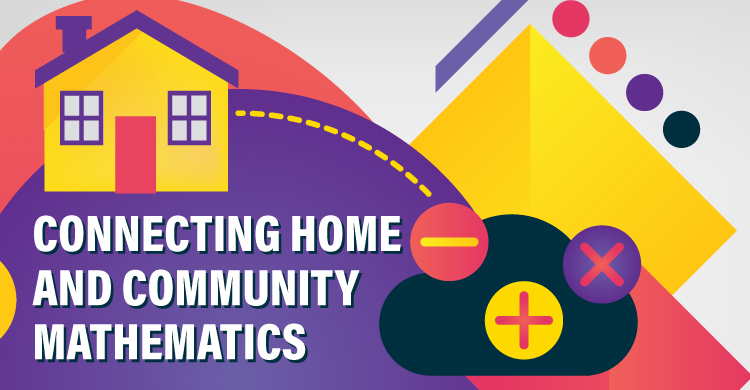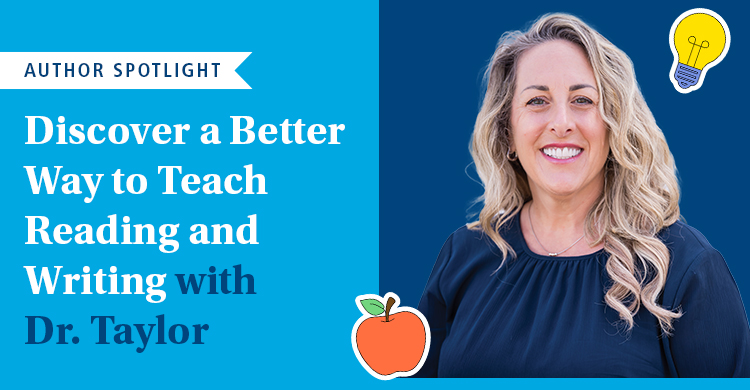Consider a day in your life. From the moment you wake up in the morning you are using mathematics to make decisions. Time, measurement, and basic facts run through our heads constantly (Do I have time to hit snooze one more time? When do I need to leave the house if work is seven miles away? If I start dinner now what time will it be ready?), and ratios, operations, and geometry come into play as well (If I want to double this recipe, how much flour do I need? How much water do I need in the pot to boil my pasta or make my rice? For my family of four, how many tacos should I order?) We use these concepts constantly in various informal settings; however, many learners struggle to make sense of the same concepts in formal mathematics classrooms. If we design mathematics experiences to bridge such student and family funds of knowledge (Moll et al., 1992) with traditional mathematics, we can provide greater access to complex mathematical ideas.
Building Effective Practice
Teachers can build their practice to bridge home and school experiences by selecting appropriate tasks, communicating with students through effective questioning, and gathering evidence about what they have learned. This starts with building relationships with students and families, when possible, to learn when and how mathematics is occurring in the home or community. Effective communication underlies these relationships. Interestingly, virtual learning has allowed teachers to catch a glimpse of student lives outside of school that they may have never seen before. For example, educators are seeing student homes in the background of virtual class meetings and hearing sounds and seeing sights that occur in students’ everyday lives. These observations and interactions provide opportunities for teachers to more readily connect mathematics to students’ lived experiences.
Pedagogical Content Knowledge
Effective teachers use what they know about students to design relevant and appropriate mathematics tasks, and to develop effective questioning and assessment techniques to ensure understanding. In order to do this effectively, teachers must have strong pedagogical content knowledge (PCK; Shulman, 1986). Deep understandings of mathematics, including representations, the types of responses certain number choices might elicit, and effective questioning enable teachers to design instruction. Making Sense of Mathematics for Teaching (MSMT; see the series from Dixon, Nolan, & Adams of DNA Math) is a resource that provides insights and content-based ideas for many foundational mathematics concepts. MSMT highlights effective practices that rely on and build strong PCK. For example:
- MSMT puts a focus on progressions from model to algorithm for foundational concepts. For instance, algorithms related to the operations can seem like a series of steps, rather than an efficient method based on conceptual understandings, to students who are just learning them. The algorithm for multidigit addition, for example, can be developed conceptually by beginning instruction with base 10 models. Base 10 blocks are an excellent tool that provide a model for regrouping that helps students to see what “carrying” really means. From here, students can begin recording their process numerically while still using or drawing the base 10 model. With enough experience students will move away from the model and begin to rely on numerical reasoning to solve these problems. At that time, the teacher can show them how to record their thinking using the standard algorithm, which is simply a more efficient and consistent way to keep track of steps. This allows the student to see where the algorithm comes from and creates a trail of understanding that always connects back to a physical model.
Similarly, consider the difficulty many students face when developing their understanding of the multiplication algorithm for two-digit numbers. MSMT details how eliciting an array model for multiplication through an appropriate task (such as the “Marching Band Problem”) can set a good conceptual foundation. From here, students can explore the distributive property while still visualizing a model. This naturally leads to a base 10 model and, eventually, an open area model. The open area model is a nice bridge to invented and standard algorithms, as these processes are simply recursive, efficient ways of doing multiplication. Progressions honor student thinking, as various solution strategies are appropriate throughout the process. Further, contextualizing problems within the progression based on what we know about our students’ interests results in stronger retention.
- MSMT foregrounds sense-making among students. Consider a two-digit separate task, such as Michael has 52 toy cars. He gave some to Sarah. He now has 43 toy cars. How many did he give to Sarah? Simply posing this problem to students who are still working on the concept of two-digit subtraction will elicit multiple representations (see examples below). As teachers, we need to understand the content so well that we can not only make sense of the solution strategies, but also help to ask questions that elicit these responses, provide representations that are valuable that do not come out in discussion, and connect these representations across responses. If these three representations came from students, how would you make sense of them? What questions would you ask to help students connect them? Finally, what other representations would you urge students to generate to maximize conceptual understandings? This type of planning places the cognitive demand and sense making on the students and reduces status issues in the classroom as all thinking is valued. Further, eliciting representations from students, instead of providing them as the teacher, causes a productive shift in power and provides a window into student thinking.
| Student A
52 – 10 = 42 + 1 = 43
10 – 1 = 9
9 |
Student B
43 + 7 = 50 + 2 = 53
7 + 2 = 9 |
Student C
9
|
While these student examples provided certainly provide evidence of understanding, perhaps you have students who are still struggling to make sense of the numeric representations in A and B. As the teacher, you realize that a number line representation would bridge the physical and numerical models nicely and may provide some (just-in-time) scaffolding (another DNA concept). You can provide the strategy as if it came from a student (see Dixon’s 5 instructional shifts) by saying “I saw someone do this…” and drawing the number line up on the board. From here, students discuss, ask questions, and respond to make sense of the number line.
- MSMT outlines how to implement the TQE Process, a planning model that is built around tasks, questioning, and evidence. Appropriate tasks should be thoughtful in terms of context and content (including number choice and opportunities for multiple representations) and should align with your learning goals. The tasks should center sense-making rather than prescriptive step-by-step processes. Effective teachers should anticipate student responses, at times even setting up a common error, and have a line of questioning prepared to guide the discussion. Extension tasks are also effective in this stage of the lesson. Lastly, collect evidence of student learning. This can come in the form of discussion, written work, presentations, or performance on more formal measures. Use this evidence to design your next task.
Knowledge, communication, and relationships are foundational to effective, culturally connected mathematics teaching. Your intentional development and work with students in these areas sets the stage for equitable, effective mathematics learning for each student.
Dixon, Nolan, et al. Making sense of mathematics for teaching (series).
Bloomington: Solution Tree Press.
Moll, L.C., Amanti, C., Neff, D., & Gonzalez, N. (1992). Funds of knowledge for teaching:
Using a qualitative approach to connect homes and classrooms. Theory Into Practice.
Shulman, L. (1986). Those who understand: Knowledge growth in teaching. Educational
Researcher, 15(2), 4-14.






